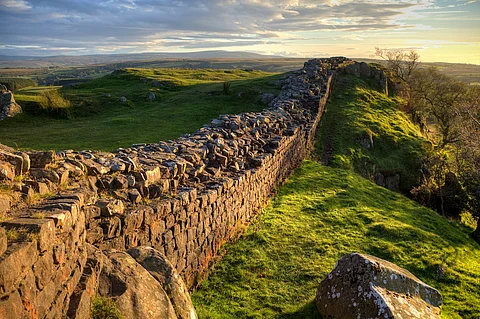

A three-year-long prolonged drought may have led to a chain of events that ultimately culminated in the Romans leaving their province of Britannia (Britain today) for good, a new study by the University of Cambridge has suggested.
‘Barbarian’ tribes like the Picts, Scotti and Saxons took advantage of the severe summer droughts in 364, 365 and 366 CE to simultaneously attack the Roman province in 367 CE, in what historians call the ‘Barbarian Conspiracy’.
The attack by the tribes — Picts to the north in Scotland, Scotti from Ireland in the west and Saxons from mainland Europe in the south — was the most serious threat to the Roman hold on Britain since the revolt by Boudica, queen of the Iceni, 300 years ago.
A statement by Cambridge noted that throughout the spring and summer of 367 CE, small groups roamed and plundered the countryside. The Roman Empire had, by then, split into Western and Eastern halves. Valentian I, Emperor of the Western Roman Empire, sent generals who took two years to restore order in the province. But the damage had been done and 40 years later, the legions left Britain in 410 CE.
Researchers from Cambridge used oak tree-ring records to reconstruct temperature and precipitation levels in southern Britain during and after the ‘Barbarian Conspiracy’ in 367 CE.
They found that southern Britain experienced an exceptional sequence of remarkably dry summers from 364 to 366 CE. “In the period 350-500 CE, average monthly reconstructed rainfall in the main growing season (April-July) was 51 mm. But in 364 CE, it fell to just 29 mm. 365 CE was even worse with 28 mm, and 37 mm the following year kept the area in crisis,” read the statement by Cambridge.
“Three consecutive droughts would have had a devastating impact on the productivity of Roman Britain’s most important agricultural region. As Roman writers tell us, this resulted in food shortages with all of the destabilizing societal effects this brings,” Ulf Büntgen, from Cambridge’s Department of Geography, was quoted in the statement.
The main crops in Roman Britain, like spelt wheat and six-row barley, were mostly sown in the spring than in winter as the land had a wet climate.
But this made them vulnerable to late spring and early summer moisture deficits, and early summer droughts could lead to total crop failure.
“The researchers point to surviving accounts written by Roman chroniclers to corroborate these drought-driven grain deficits. By 367 CE, Ammianus Marcellinus described the population of Britain as in the “utmost conditions of famine”,” the researchers note.
Tatiana Bebchuk, from Cambridge’s Department of Geography, said: “The relationship between climate and conflict is becoming increasingly clear in our own time so these findings aren’t just important for historians. Extreme climate conditions lead to hunger, which can lead to societal challenges, which eventually lead to outright conflict.”
Droughts and conflicts during the late Roman period was published on April 16, 2025, in the journal Climatic Change.
The authors include Charles Norman, Lothar Schwinden, Paul Krusic, Andreas Rzepecki, Tatiana Bebchuk and Ulf Büntgen.